“The real question is not where do ideas come from but where do they go.”
~ From “The Sellout” by Paul Beatty
Learning about music history is a great way for musicians to become informed. For a long time I was deeply informed by the music of saxophonist John Coltrane. I was so captivated with his music, sound and conceptual developments that I learned a lot of his music while I searched out all available information on him. I was deeply immersed in this study for about fifteen years. Furthermore, I studied with his former teacher, Dennis Sandole. Sandole would occasionally mention composers for me to investigate and I always learned a lot by taking his advice. On the internet, I am fascinated when I read essays about Trane online. This one by Lewis Porter outlines the influence of American composer Morton Gould on John Coltrane’s composition”Impressions”. Trane’s first recording of Impressions dates to his 1961 engagement at the Village Vanguard. We learn that “Coltrane’s source for the main theme of Impressions is the second theme of Pavanne, which is part of (Gould’s) longer work, American Symphonette No. 2”, which was premiered in 1939. In this way, Coltrane renews history and imbues an older composition with new sensibilities. I’d like to note that Ahmad Jamal’s 1955 cover of Pavanne may have been the first time that Trane heard the piece. I wonder if Jamal has been asked if Coltrane ever spoke with him about Pavanne.
The study of music history brings about an awareness of other perspectives such as structural functionalism, ethnoscience and linguistic theories, paradigmatic structuralism, Marxism, literary and dramaturgical theories, cognitive and communication theories, performance theory, feminism, phenomenology, historical research, postmodernism, post colonial theory, and semiotics.
Within this essay one may perceive multiple overlapping theoretical orientations, and each theory is not totally exclusive of one another. For instance, one senses dramaturgical ties with sociolinguistics or Marxist/economic perspectives when we think of German-born, though naturalized British Baroque composer George Frederick Handel whose work bridged royal courts and public performance venues. Beethoven emphasized above all the simplicity and popular appeal of Handel’s music when he said, “Go to him to learn how to achieve great effects, by such simple means.” Did you know that when guitarist Jimi Hendrix lived in London, his flat was next door to Handel’s residence? I visited these places a few years ago and was intrigued to see Handel’s harpsichord while reflecting on Hendrix’s use of a harpsichord in his song Burning Of The Midnight Lamp. Another overlapping theoretical orientation may be perceived in neurobiological cognition enmeshed with phenomenology when we consider Beethoven’s degenerative deafness and how it affected his moods and music. Furthermore, in other lives we may see Marxist approaches that inform ethnic studies; and gender and culture perspectives within the context of phenomenology.
Writing about western music history provides me with a historical sensibility which I use in the post modern sense of genealogy. In this way we look at the scope, breadth or totality of ideology within the time period in question, as opposed to focusing on a singular or dominant ideology. Moreover, a genealogy often attempts to look beyond the ideologies in question, for the conditions of their possibility.
Western music history isn’t the only music history. There are so many musical cultures to learn about. Being a guitarist, I am currently fascinated with the middle eastern string instrument, the oud. The oldest pictorial record of an oud dates back over 5000 years, on a cylinder seal from the Uruk period, in northern Syria, Mesopotamia. The artifact is currently housed at the British Museum. The western lute has a similar construction to the oud. The oud is readily distinguished from the lute by its lack of frets and smaller neck. Alongside the lute, it is considered an ancestor of the guitar.
Western Music History
From Antiquity Through The 18th Century
“There is certainly no action among men that is carried out without music.”
~ Aristedes Quintilianus (c. 300 B.C.E.) [i]
This essay will explain how and what I learned to understand Western Music History from antiquity through the 18th Century. These subjects encompass the full array of historical studies offered at leading music colleges and universities. I have been playing guitar and studying music for 43 years and I have a deep knowledge of historical musical developments. Some of the ways in which I learned music history include: enculturation, formal instruction from private teachers and schools, rote learning, on the job learning, dialogues with musicians, self-education cross referenced tangentially from other interests like dance, film, and theater, and multimedia learning that incorporates both audio and visual components.
I was born in 1963 and I grew up in a musical household where both of my parents played musical instruments and listened to different styles of music. In elementary school I took classes in history and music, which included movies and filmstrips about famous composers. I learned about music history from reading books, encyclopedias, music magazines, the liner notes of record’s and later, CD’s. I read most of the books in the Hunterdon County Library’s music section and listened to most of the records in their collection. Music teachers suggested books, etudes and major works to study. As I began to compose I learned from many recordings and books (see bibliography) including The Harvard Dictionary of Music. Some books I studied from, such as the Norton Anthology of Western Music: Volume 1 and 2, and a book of Beethoven’s letters, have not survived numerous residential moves so I won’t quote them in this essay.I learned from a variety of “classical” guitar folios that included music by Bach, Beethoven, Carcassi, Carulli, Dowland, Galilei, Handel, Haydn, Mozart, Rameau, Sor, Vivaldi, and others (Bay 1960), (Bay 1971), (Harris 1999), (Sokolow 1987), (Vinson 1971), (Waldron 1991). For my studies on the mandolin, I learned from the “Suzuki Violin Method books, volumes 1-5” which has many pieces from the above composers. While learning these pieces of music I cross-referenced biographical information pertaining to the composers with concurrent historical events and the given music/art period. I have attended countless concerts of many styles and musical periods of which are discussed later in this essay. Throughout my life I have performed and recorded with a wide array of instrumentalists (pianists, violinists, flutists, oboists) who have informed me of the origins, evolution and important works written for their instruments.
Music in Antiquity
Artifacts, early paintings, and writings are the main sources of information on music in antiquity. Whistles and flutes made from animal bones survive from the Stone Age in Europe before 36,000 B.C.E. Images in Turkish cave paintings show drummers and dancers driving out game in the sixth millennium B.C.E. Surviving Bronze Age metal instruments include bells, cymbals, rattles, and horns from 4000 B.C.E. Pictures from ancient Mesopotamia show music making with instruments and surviving instruments include lyres and harps.[ii] In 1974 a team of linguists and musicologists decoded and transcribed the musical notation (a hymn) on a Babylonian cuneiform tablet dating from about 1200 B.C.E. (Taruskin 2010, 1:31).
Music and its origins are described in Greek mythology and in the Bible (Grout 1980:3-5). Damon of Athens (c. 500 B.C.E.) argued that the modes expressed the personality of the people from those regions: Dorians, Lydians, Phrygians, etc (Hamilton 2007:26). Pythagoras (c. 550 B.C.E) developed thoughts about music and its relationship to planets using mathematical proportions from the pitches of a blacksmith anvil and later by the division of vibrating strings (Hamilton 2007:19-21). In “Timaeus”, Plato sees musical order related to harmonies of the cosmological universe (Hamilton 2007:25). Socrates, via Plato’s “Republic”, argued that innovations in music threaten the order of the state (Hamilton 2007:26). Aristoxenus (c. 300 B.C.E.), a pupil of Aristotle, wrote the earliest substantially preserved musical treatise, “On Harmonics” (Hamilton 2007:27). The Platonic-Pythagorean influence was dominant at least until the Renaissance (Hamilton 2007:32).
Medieval Music Era (400-1400)
The nun Egeria, in accounts of her pilgrimage to Jerusalem (c. 400 A.D.), includes descriptions of hearing psalms and singing.[iii] Liturgical chants developed over the early centuries, until the practice, as we commonly know it, developed as a result from the religious reforms of Charlemagne (742-814 A.D.), who drew on the resources of the Roman Catholic Church in his attempts to unify his empire. Charlemagne replaced the disparate local and regional varieties of plainchant with a single practice. The resultant liturgical practice, a combination of Frankish and Roman elements, is commonly known as Gregorian chant (Taruskin 2010, 1:62-66).
Gregorian Chant is a single line melody with no accompaniment (monody) using a flexible rhythm that is sung in Latin by men’s voices. There are many types of chants and each serves a function: the mass, the office, psalms and prayers, requiem mass, and various processions. A typical Sunday High Mass and Office is described by Grout (1980: 75-78). Being raised Catholic and attending church weekly, I witnessed, participated and learned much of this music, though the text was in English.
Developments from 900-1100 include the use of staff notation with one or more clefs, sight singing using pitch assigned syllables, and hexachordal combinations with the use of the Guidonian hand.[iv] New genres that developed include the monophonic conductus (the versus = verse), and the trope. Music treatises from 900 A.D. give instructions for performing parallel organum (i.e. parallel motion),[v] and oblique motion (Randel 1986:513).
Chants vary in complexity from a single pitch to long elaborations. Melodies are classified by how many notes there are per syllable.[vi] Square notation on a staff was developed as a way to memorize a collection of over 4000 chants used in a church year. Church Modes developed to classify chants.[vii] Boethius was a primary author of “speculative” musical treatises that focused on acoustics, aesthetics and the psychology of music. Theory training included the study of intervals, memorizing chants, musical notation and the modes (Grout 1980:56). Hildegard von Bingen (1098-1179), composed all types of chants some of which I learned (Taruskin 2010, 1:90-92).
From 1000-1300, polyphonic writing developed to ornament solo chants. Contrary motion, punctus contra punctum organum (note-against-note), supplemented parallel and oblique motion.[viii] Florid organum utilized several notes for each note of the principal voice. The Notre Dame organum employed rhythmic notation and a variety of specific voice movements. Nonliturgical and secular monody include the Goliard songs from the 11th and 12th Centuries (Grout 1980:64). Typically, a college Music History course includes a variety of musical recordings and/or performances as a way to learn better, so as in a college classroom, I referenced many musical performances on Youtube, several of which I cite in this essay. For example, Dies irae (“Day of Wrath”) may be the most famous medieval liturgical song (Taruskin 2010, 1:88) and I learned it’s nature from a monk’s performance on Youtube.[ix]
In 1300, the magister of The University of Paris, Johannes de Grocheio, wrote a treatise that describes the use of music for social stability. Grocheio’s highest value was for a new genre, the Motet, which was favored by his social/economic class (Taruskin 2010, 1:207). As rhythmic independence of the melodic lines developed, so did rhythmic notation. The Franconian and Petronian motets exhibit a stratified texture in which the top part moves faster than the middle and lower parts. I enjoyed a Petronian Motet by Petrus de Cruce (Pierre de la Croix) on YouTube.[x]
From 1150 – 1300 secular music was developed by the troubadours from the south of France and the trouvères in the northern regions. Their repertory is largely strophic, with the music of one stanza repeated for successive stanzas. Song contexts include politics, morality and love conquests (Grout 1980:66). Minstrels, also known as jongleurs, were considered entertainers as they might perform courtly songs, but they might also juggle, dance, and recite poems.[xi]Minstrels sang chansons de gest (song of deeds), which were epic poems recounting the deeds of national heroes including “The Song of Roland” (c. 1150) (Grout 1980:65).
The Ars Nova (“The new art of music”) treatises began to appear in 1322 and conditioned musical practice with advanced mathematical concepts by subdividing rhythms into smaller, precise parts utilizing new notations (Taruskin 2010, 1:248). Guillaume de Machaut (1300-1377), the best-known composer of the Ars Nova, used complicated isorhythms and hockets (Taruskin 2010, 1:266). Machaut’s composition “Messe de Notre Dame” is the most famous composition of the 14th Century (Grout 1980:125). I practiced singing along with a performance on YouTube that includes the score.[xii] The Italian Trecento composers adopted the poetic forms of the madrigal, the ballata (Randal 1986:70), and the caccia (a type of canon) and by the end of the 1300’s cross fertilization with the Ars Nova aesthetic occurred.[xiii] Chromatically altered cadences, specific to their region, developed in French and Italian music (Grout 1980:139).
Renaissance Music Era (1400-1600)
The characteristic “ideal” sound in the 16th Century, was that of four or more voice lines of similar character in a homogeneous tone color; a polyphony of independent voices (Grout 1980:174). The principal forms of sacred musical composition were the mass, the motet, and the laude. The secular forms included the chanson and the frottola – a precedent of the madrigal (Grout 1980:212). The notated use of elaborate canons and rounds begins in this era (Taruskin 2010, 1:330). The invention of printing in 1440 had an immense influence on the dissemination of musical styles.
The Burgundian school, which refers to the first phase of composers of The Franco-Flemish school (Randel 1986:693), was a group of composers with ties to the court of the Dukes of Burgundy (aristocratic patrons of the arts), in an area that is now northern and eastern France, Belgium, and the Netherlands (Randel 1986:116). Guillaume Dufay’s (1397-1474) liturgical chant harmonizations used a technique of parallel writing (fauxbourdon) as in the beginning of Salvator mundi Domine (Taruskin 2010, 1:436-437). Johannes Ockeghems’ (1410?-1497) sonorities followed Dufay but used more voice independence with highly skillful canons (Grout 1980:179-181). Jacob Obrecht (1452-1505) composed parts with cadences occurring before the last word was pronounced in full (Grout 1980:189). Later motets exhibit thick, dark textures, with an extended low range such as Josquin des Prez’ (1450-1521) “De profundis clamavi ad the”.[xiv] Prez’ “La Spagna”, is an example of the rhythms and sounds of Renaissance dance.[xv] The Cortesia ensemble performs examples of of Renaissance dances in duple and triple meters.[xvi]
Thomas Tallis (1505-1585), one of the finest English composers of church music, wrote “Lamentations (of Jeremiah the Prophet)”. His unique motet “Spem in alum”, written for eight, five-voice choirs, is a high point in polyphony.
A prolific composer, Giovanni Pierluigi da Palestrina’s (1525-1594) most famous work is the “Pope Marcellus Mass”.[xvii] “Jesu, rex admirabilis” is a spiritual madrigal for three voices.[xviii] The music of Palestrina became a personal source of interest and study for me after hearing Igor Stravinsky mention in a documentary that he preferred Palestrina’s counterpoint to Bach’s.[xix] In 2010 I heard a choir sing Palestrina’s music at St. Marks Cathedral in Venice and was impressed with the balance and clarity of the polyphony.
Carlo Gesualdo (1566-1613) reached the heights of chromaticism in Italian madrigals (Grout 1980:237). Claudio Monteverdi (1567-1643), a principal composer of Western music, is seen as a transitional figure from the Renaissance to the Baroque era. Monteverdi’s five books of madrigals developed the concertato style, he threatened the ars perfecta with new textures, and his dissonances intensified the feelings in the poetry. I especially enjoyed Monteverdi’s “cruda amarilli” when I studied his music.[xx]
The Venetian school refers to the precepts that became important by the end of the 1500’s (Grout 1980:208). Vincenzo Galilei (1520-91) advocated a return to Greek style monody because he opposed the polyphonic use of voices (Taruskin 2010, 1:799). The first operas were written around 1600 by Peri and Caccini, using the monodic style (Taruskin 2010, 1:826), and by Cavalieri in Rome (Taruskin 2010, 1:832). By 1607 Monteverdi’s opera Orfeo pushed the genre into more dramatic regions with more expressive harmonies, solos, duets, dances and madrigal –like ensembles (Grout 1980:307-310).
Music during the Protestant Reformation (1517) included the development of the Tenorlied. The distinctive musical genre of the Lutheran Church was the German hymn known as the Choral; similar to a chant (Taruskin 2010, 1:758). Germany cultivated polyphonic forms built on the Protestant chorales. By 1615 explicit texts on orchestration were published (Taruskin 2010, 1:783). Organs developed with separate stops and multiple keyboards (Randel 1986:584). Spain developed instrumental and vocal styles of its own, including Tomás Luis de Victoria (1548-1611) who composed similar to that of Palestrina. Writing for the organ and the guitar became more prevalent during this era. I learned “Greensleeves” on the guitar when I was young. Vinson’s “Music for Classical Guitar” includes pieces from the 14th Century, many of which I learned and performed. Friends who perform music from this period instructed me about their instruments (double reeds, lutes, percussion), and the songs from this era that continue to be performed.
Baroque Music Era (1600-1760)
The sound ideal of the Baroque period was a firm bass and a florid treble, held together by unobtrusive harmony (Grout 1980:300). Homophonic texture began in the baroque period and was widely used. Uniform instrumentation of the Renaissance gave way to varied instrumentation – the beginning of the orchestra.Developments that were emphasized in the baroque period include: Figured bass, basso continuo, the concerto, concerto grosso, ostinato bass lines, and technically improved instruments.
Figured bass/thoroughbass consists of a bass-line notated with notes on staff plus added numbers and accidentals beneath the staff to indicate what intervals above the bass notes should be played, and therefore which inversions of which chords are to be played (Randel 1986:855). This is associated with the accompaniment, basso continuo, where an instrument that plays chords (lute, guitar, harp, organ, harpsichord), improvises the harmony. The continuo group could be any make up of instrumentation that also doubles the bass and melody parts to provide a full sonority (Grout 1980: 302). I learned to read and write figured bass in a music theory class.
Styles of baroque composition include: canzone, sonata, concerto, ricercar, and fugue. The Trio Sonata, which features two melody instruments (often violins) supported by basso continuo, was the primary form of Baroque chamber music. Instrumental concert hall music was presented as a concerto or concerto grosso.
Alessandro Scarlatti (1660-1725) is famous for his operas and chamber cantatas and is considered the founder of the Neapolitan (Naples) school of opera. Antonio Vivaldi (1678-1741) is known mainly for his 500 concertos, especially the violin concertos known as “The Four Seasons” (Taruskin 2010, 2:217). Vivaldi influenced Bach (Taruskin 2010, 2:218). Jean-Philippe Rameau (1683-1764) was the foremost French musician of the 18th century, a music theorist, composer, and teacher. He formulated the melodic minor scale, tertian harmony to the ninth, and espoused the tonic, subdominant and dominant as pillars of tonality (Grout 1980:409-415).
Johann Sebastian Bach (1685-1750) never left Germany and had a provincial career as a Lutheran organist, cantor and composer (Taruskin 2010, 2:239-240). Bach sought to maximize formal expression and textural complexity (Taruskin 2010, 2:242). Bach composed in all forms, except opera. Bach’s significant contributions include: the six “Brandenburg” concertos which employ unique instrumentations (Taruskin 2010, 2:289-290), “The Well-Tempered Clavier” (demonstrating the possibility of playing in all keys using the then novel tempered tuning), music for solo instruments, the “Goldberg” variations, the “Mass in B minor”, “St. Matthew Passion” for choral writing, and the “Art of Fugue” (Grout 1980:423).
George Frideric Handel (1685-1759) competes with Bach with regard to his output and influence on successive composers. Handel studied in Germany and Italy, then moved to London where he became internationally renowned with 42 operas, oratorios featuring English librettos, and his main compositions “Messiah” (which includes the famous Hallelujah Chorus), “Water Music” (a group of three dance suites), and “Fireworks Music” (a single dance suite) (Grout 1980:435-447). Handel was one of the first composers to seek financial support outside the royal courts (Attali 1985:50). Domenico Scarlatti (1685-1757), son of Alessandro, wrote idiomatic harpsichord music demonstrating all of its timbral sonorities using virtuosic technique, pastoral quietness, various moods, and rhythms from all over Europe. I enjoyed Rafael Puyana’s performance of Scarlatti´s sonate K.119 on a Hieronymus Albrecht Hass Harpsichord made in1740.[xxi]Other notables of this era are: Pachelbel, Froberger, Kerll, Buxtehude, and Corelli.
My knowledge of the baroque era broadened as a teen when I listened to recordings of guitarists Andre Segovia, Julian Bream, Michael Lorimer, and John Williams, each of whom recorded an extensive amount of baroque music. The liner notes of their records and their interviews in “The Guitar Player Book”, informed my historical understanding. I learned Bach’s music including “Ave Maria”, “Jesu – Joy of Man’s Desiring”, and “Bouree – from Suite no. 1 for lute, BWV 996”. Later studies included Bach’s “Fifteen Two Part Inventions for the Piano”, “Fifteen Three Part Inventions for the Piano”, “Sonatas and Partitas for the Violin”, “The Toccata and Fugue in Dm”, “Studies for Oboe”, “The Cello Suites”, and Pablo Casal’s interpretation techniques of many baroque and classical compositions (Blum 1977).
Classical Music Era (1750 – 1830)
The classical period emphasized several developments and trends. The Alberti bass is a repeated pattern of arpeggiated accompaniment usually played on a keyboard (Grout 1980:456). Sonata form matured during the Classical era to become the primary form of instrumental compositions throughout the 19th Century. The Reform opera was a trend to make Italian opera more natural and expressive such as Christoph Willibald Gluck’s (1714-1787) opera “Orfeo ed Euridice”. The second trend was a change in the style of solo keyboard music. Carl Philipp Emanuel Bach (1714-1788), a son of J.S. Bach, preferred the wider dynamic range of the clavichord and the fortepiano. The third trend was the introduction of the symphony, a multi-movement work for orchestra.[xxii]
Franz Joseph Haydn (1732-1809) wrote 104 symphonies and many examples of the string quartet (two violins, viola, cello), another genre born in the late 18th Century. I supplemented my readings on Haydn and I saw his opera “Julius Caesar” performed at the Met in New York City. Witnessing the opulence and forceful yet light and effortless vocal expression deepened my experiential learning.
Wolfgang Amadeus Mozart (1756-1791) toured Europe as a child prodigy and upon reaching adulthood, settled in Vienna. The Italian operas that Mozart wrote in Vienna were in the traditional Italian buffa (comic) style, yet they went beyond buffa comedy to engage social and moral issues.[xxiii] Mozart’s last five operas represent the apotheosis of his work, and of classical opera: “The Marriage of Figaro”, “Don Giovanni”, “Cosi Fan Tutte”, “La Clemenza di Tito” and “The Magic Flute”.[xxiv] Mozart wrote string quartets, concertos, and symphonies. I studied the transitional chord progressions used in Symphony No. 40 in G minor (Schoenberg 1969:143-144, 149-152). I have heard several of Mozart’s late symphonies and many sonatas performed live.
Ludwig van Beethoven (1770-1827) lived in a time of great change: the American Revolution (1776), the French Revolution (1789), and the rise and fall of Napoleon (1804-1815). In 1801 Beethoven confessed for the first time that he was losing his hearing (Taruskin 2010, 2:653). Beethoven’s significant contributions include: careful attention to dynamic shading, unexpected turns of phrase, unconventional modulations, and sudden changes of mood (Grout 1980:526). Beethoven’s masterpieces include: 3rd Symphony in Eb (Eroica the “heroic symphony”), 5th symphony in Cm (the most famous of all symphonies), 9th symphony in Dm (set Schiller’s Ode To Joy to music), 32 piano sonatas (especially the last five), late string quartets, Missa Solemnis, and the Diabelli Variations.
My knowledge of Beethoven developed experientially through watching performances of his works on PBS TV and in school classes where filmed performances were shown. A series of films featuring Leonard Bernstein teaching music and conducting orchestras was part of a music class. In 1980, I arranged the Dm Sonata Op.31, No.2 (Moonlight Sonata) for a small ensemble as my theory class final. I have studied and played the scores to the string quartets, Symphonies 5-9, studied 5th Symphony conducting techniques, read detailed analysis of the string quartets (Kerman 1966), compositional concepts (Schoenberg 1967), modulation techniques (Schoenberg 1969:19-23), scholarly essays (Lang 1970) and a book of Beethoven’s letters. Live performances of Beethoven’s work I have heard include Symphonies 3-9, Missa Solemnis, all late string quartets, and some piano sonatas. Additionally, in the late 1980’s I devoured Schoenberg’s Fundamentals of Musical Composition, which provides conceptual definitions and dozens of examples from the works of Bach, Haydn, Mozart and Beethoven. “The Study of Fugue” helped me learn the developments of Fugal writing from the Renaissance until 1800 with concepts, examples, challenges, and solutions faced by J.S. Bach, Mozart, and Beethoven (Mann 1986:263-268).
It has been a challenge to distill, into only about ten pages, 40 years of study about the history of music from antiquity to 1800. My first draft was 27 pages, with deeper analysis and discussions of many other great composers and concepts of these eras, which I hope to flesh out in future writings.
ENDNOTES
[i] Hamilton 2007:11
[ii] www.wwnorton.com/college/music/grout7/outlines/ch01.htm , accessed July 1, 2011.
[iii] http://people.vanderbilt.edu/~cynthia.cyrus/ORB/orbmusic.htm , accessed July 1, 2011.
[iv]Professor William Mahrt demonstrates the solfege technique using the Guidonian hand on the
Ut queant laxis (8th century hymn to St. John the Baptist).
www.youtube.com/watch?v=RlleweQuq14 , accessed July 1, 2011.
[v] http://people.vanderbilt.edu/~cynthia.cyrus/ORB/orbmusic.htm , accessed July 1, 2011.
[vi] Ibid.
[vii] Ibid.
[viii] Ibid.
[ix] www.youtube.com/watch?v=-fMHms5Cvsw, accessed June 30, 2011.
[x] www.youtube.com/watch?v=LS0jAZFWrmA , accessed July 1, 2011.
[xi] http://people.vanderbilt.edu/~cynthia.cyrus/ORB/orbmusic.htm , accessed July 1, 2011.
[xii] www.youtube.com/watch?v=1Y1O-BcZQwY, accessed July 1, 2011.
[xiii] http://people.vanderbilt.edu/~cynthia.cyrus/ORB/orbmusic.htm , accessed July 1, 2011.
[xiv] www.youtube.com/watch?v=lcQH2Jea2Qw , accessed July 1, 2011.
[xv] www.youtube.com/watch?v=VTyi0TNGquY , accessed July 1, 2011.
[xvi] www.youtube.com/watch?v=VqvoFHekE0c&feature=related , accessed July 1, 2011.
[xvii] www.youtube.com/watch?v=_rAwHgopVkQ&feature=related , accessed July 1, 2011.
[xviii] www.youtube.com/watch?v=BXQuOQccCWA&feature=related , accessed July 1, 2011.
[xix] “Once, at a border…” – Aspects of Stravinsky. VHS. 1981.
[xx] www.youtube.com/watch?v=zBl4kazdK4A , accessed July 1, 2011.
[xxi] www.youtube.com/watch?v=uSj24ge6sew , accessed July 5, 2011.
[xxii]Marlon Feld, www.columbia.edu/itc/music/ito/history/, accessed July 6, 2011.
[xxiii]Ibid.
[xxiv]www.sas.upenn.edu/~dfox/mozartsyllabus.html, accessed July 6, 2011.
Bibliography
Attali, Jacque. 1985. Noise – The Political Economy of Music. Minneapolis, MN: University of Minnesota Press.
Barenboim, Daniel and Edward Said. 2002. Parallels and Pardoxes. New York: Random
Bay, Mel. 1960. Classic Guitar Method. Kirkwood, MI: Mel Bay Publications.
———. 1971. Easy Classic Guitar Solos. Kirkwood, MI: Mel Bay Publications.
Berkowitz, Sol with Gabriel Fontrier and Leo Kraft. 1986. A New Approach to Sight Singing. New York, NY: W.W. Norton & Co.
Blum, David. 1980. Casals and the Art of Interpretation. Los Angeles, CA: University of California Press.
Burroughs, Raymond with Bessie Redmond and George Szell (editor). 1942. Symphony Themes. New York: Simon and Schuster.
D’Auberge, Alfred and Morton Manus. 1959. Alfred’s Basic Guitar Method – For Group or Individual Instruction, Books 1-4. New York: Alfred Publishing.
Giuliani, Mauro. 1980. 120 Daily Guitar Studies for the Right Hand. 19th Ed. Miami, FL: Celesta Publishing.
Green, Elizabeth. 1997. The Modern Conductor, 6th Ed. Englewood Cliffs, NJ: Prentice Hall.
Grout, Donald J. 1980. A History of Western Music. New York, NY: W.W. Norton & Co.
Harris, Joseph. 1999. 50 Classical Guitar Pieces. Ventura, CA: Creative Concepts Publishing.
Horowitz, Joseph. 1984. Conversations with Arrau. New York: Limelite Editions.
Jacob, Gordon. 1968. Orchesteral Technique, A Manual for Students. London, England: Oxford University Press.
Kennan, Kent. 1987. Counterpoint. Englewood Cliffs, NJ: Prentice-Hall.
——— and Donald Grantham. 1990. The Technique of Orchestration. Englewood Cliffs, NJ: Prentice-Hall.
Kerman, Joseph. 1966. The Beethoven Quartets. New York, NY: W.W. Norton & Company.
Lang, Paul Henry. 1970. The Creative World of Beethoven. New York, NY: W.W. Norton & Co.
Mann, Alfred, ed. 1971. The Study of Counterpoint from Johann Joseph Fux’s Gradus Ad Parnassum. New York: W.W. Norton & Co.
———. 1987. The Study of Fugue. New York: Dover Publishing.
Peters, Charles S. and Paul Yoder. 1980. Master Theory. San Diego, CA: Neil A Kjos Music
Piston, Walter. 1955. Orchestration. New York, NY: W.W. Norton & Co.
———. 1987. Harmony. New York, NY: W.W. Norton & Co.
Randel, Don Michael. 1986. The New Harvard Dictionary of Music. Cambridge, MA: The Belknap Press of Harvard University Press.
Read, Gardner. 1979. Music Notation – A Manual of Modern Practice. New York, NY: bTaplinger Publishing.
Sandole, Dennis. 1980. Strict Counterpoint – Canti Fermi from Antonio Salieri. Unpublished.
Schiff, David. 1998. The Music of Elliott Carter. Ithaca, NY: Cornell University Press.
Schoenberg, Arnold. 1967. Fundamentals of Musical Composition. London, Boston: Faber & Faber.
———. 1969. Structural Functions of Harmony. New York, NY: W.W. Norton & Co.
———. 1975. Style and Idea. Berkeley and Los Angeles, CA: University of California Press.
———. 1983. Theory of Harmony. Berkeley and Los Angeles, CA: University of California Press.
Scruton, Roger. 1997. The Aesthetics of Music. New York: Oxford University Press.
Sokolow, Fred. 1987. Solos for Classical Guitar. New York, NY: Carl Fischer.
Suzuki, Dr. Shinichi. 1978. Suzuki Violin School – Violin Part (Vol. 1-5). Miami, FL: Warner Brothers Publications.
Taruskin, Richard. 2010. Music From the Earliest Notations to the Sixteenth Century. Vol. 1 of The Oxford History of Western Music. New York, NY: Oxford University Press.
———. 2010. Music in the Seventeenth and Eighteenth Centuries. Vol. 2 of The Oxford History of Western Music. New York, NY: Oxford University Press.
Vinson, Harvey, ed. 1971. Music For Classical Guitar – More Than 100 Pieces. New York: Consolidated Music Publishers.
Waldron, Jason, ed. 1991. Guitar Masterpieces of the 19th Century. Costa Mesa, CA: Koala
Videography
“Once, at a Border . . .” Aspects of Stravinksy. VHS. Directed by Tony Palmer. Kulture Video, 1981.
################################################################################
- Intro Guitar Technique and Advanced Guitar and Performance Techniques - May 30, 2016
- Critical Theory And The End Of Noise – Post #6 of 6 - April 15, 2015
- Critical Theory And The End Of Noise – Post #5 of 6 - March 31, 2015
- Critical Theory And The End Of Noise – Post #4 of 6 - March 11, 2015
- Western Music History From Antiquity Through The 18th Century - March 4, 2015
- Anthropology of Music – Post #3 of 3 - February 25, 2015
- Native American Perspectives in Music – Post #3 of 3 - February 18, 2015
- Critical Theory And The End Of Noise – Post #3 of 6 - February 11, 2015
- Music Theory And Harmony - February 4, 2015
- Anthropology of Music – Post #2 of 3 - January 28, 2015



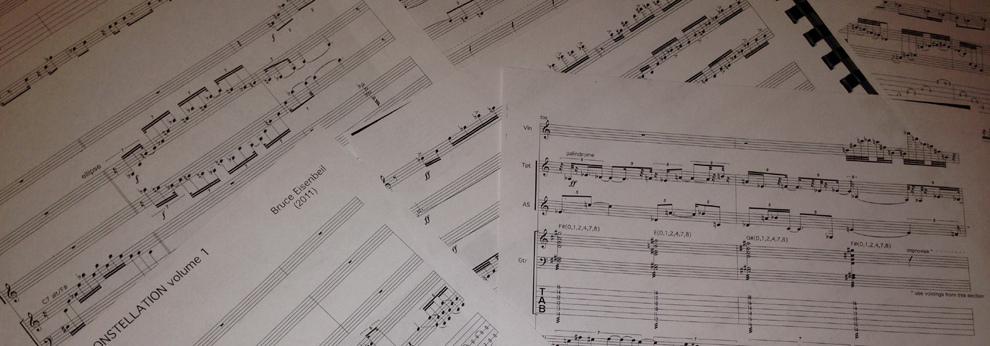

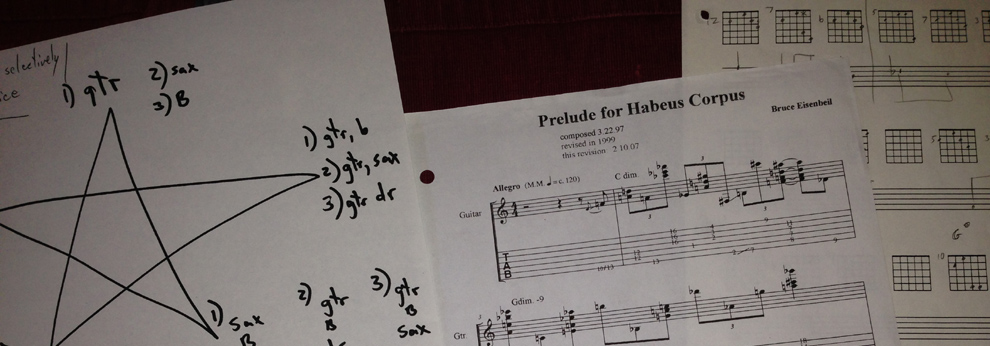
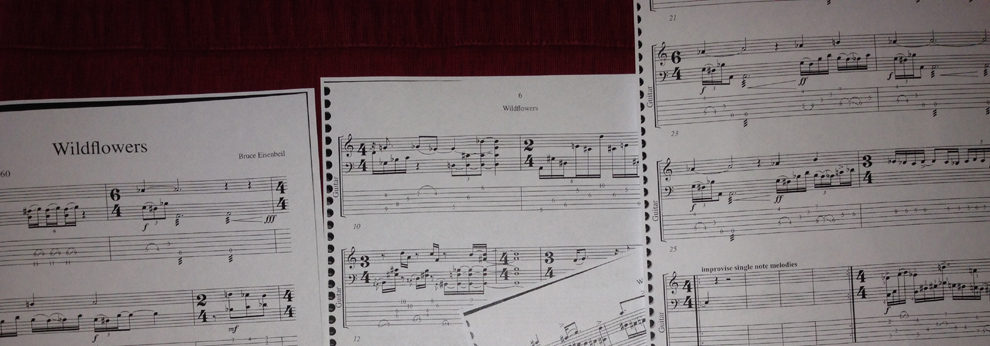








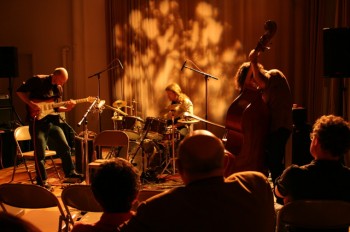
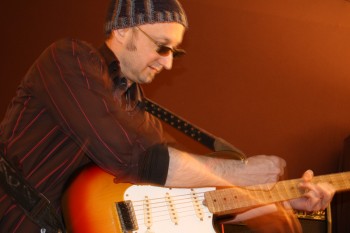
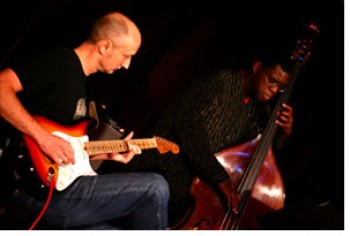
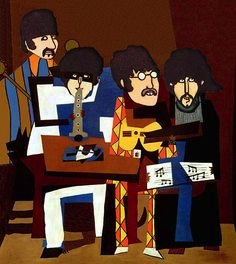

Social Profiles